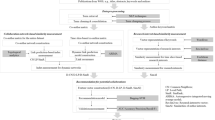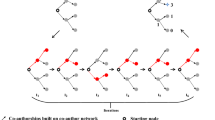Abstract
User recommendation plays a crucial role in social network applications such as co-authorship networks. Existing techniques mostly strive to pursue the similarity between nodes or the accuracy of link prediction, leading personal networks to be monotonic. However, users often have various expectations regarding the growths of their social networks, which is clearly hard to capture via automatic algorithms. In addition, adopting a recommendation likely introduces subtle changes to a social network, which may further influence the next stage of recommendation. These highly personalized and dynamic aspects of the growth of a personal social network are rarely touched in existing work. In this project, we introduce an expectation-driven visual recommendation system to address the customized demands in co-authorship social networks. The system characterizes a person’s social network with the tags of the friends. It visually presents the changes made by individual recommendations, including the direct changes to the network and the potential changes that will be introduced by possible subsequent recommendations. A visual simulation interface allows users to add friends from the recommended list. The recommendation result will be updated instantly for inspection. Thus, users can comprehensively compare different growth strategies to find the most beneficial one. We demonstrate the system with DBLP academic co-authorship network to confirm its effectiveness and efficiency.
Graphical abstract













Similar content being viewed by others
Notes
CCF categories: http://www.ccf.org.cn/xspj/gyml/.
References
Aghabozorgi F, Khayyambashi MR (2018) A new similarity measure for link prediction based on local structures in social networks. Phys A Stat Mech Appl 501:12–23. https://doi.org/10.1016/j.physa.2018.02.010
Ahmed NK, Duffield N, Xia L (2017) Estimating node similarity by sampling streaming bipartite graphs. CoRR 3:e116
Barbieri N, Bonchi F, Manco G (2014) Who to follow and why. In: Proceedings of the 20th ACM SIGKDD international conference on Knowledge discovery and data mining—KDD ’14, ACM Press, New York, New York, USA, pp 1266–1275. https://doi.org/10.1145/2623330.2623733
Bostandjiev S, O’Donovan J, Höllerer T (2012) TasteWeights. In: Proceedings of the sixth ACM conference on Recommender systems—RecSys ’12, ACM Press, New York, New York, USA, p 35. https://doi.org/10.1145/2365952.2365964
Brandão MA, Diniz MA, de Sousa GA, Moro M (2017) Visualizing co-authorship social networks and collaboration recommendations with CNARe. In: Graph theoretic approaches for analyzing large-scale social networks. IGI Global, pp 173–188
Castells P, Hurley NJ, Vargas S (2015) Novelty and diversity in recommender systems. In: Ricci F, Rokach L, Shapira B (eds) Recommender systems handbook. Springer, Boston, pp 881–918. https://doi.org/10.1007/978-1-4899-7637-6
Chen J, Geyer W, Dugan C, Muller M, Guy I (2009) Make new friends, but keep the old. In: Proceedings of the 27th international conference on Human factors in computing systems—CHI 09. ACM Press, New York, May 2016, p 201. https://doi.org/10.1145/1518701.1518735
Eklaspur NM, Pashupatimath AS (2015) A friend recommender system for social networks by life style extraction using probabilistic method—Friendtome. Int J Comput Sci Trends Technol (IJCST) 3(3):95–101
Fang X, Sheng ORL, Goes P (2013) When is the right time to refresh knowledge discovered form data? Oper Res 1(1):57. https://doi.org/10.1287/opre.1120.1148
Gou L, You F, Guo J, Wu L, Zhang XL (2011) SFViz. Proceedings of the 2011 visual information communication—international symposium on—VINCI ’11 (August 2011), pp 1–10. https://doi.org/10.1145/2016656.2016671
Gretarsson B, O’Donovan J, Bostandjiev S, Hall C, Höllerer T (2010) SmallWorlds: visualizing social recommendations. Comput Graph Forum 29(3):833–842. https://doi.org/10.1111/j.1467-8659.2009.01679.x
Guns R, Rousseau R (2014) Recommending research collaborations using link prediction and random forest classifiers. Scientometrics 101(2):1461–1473. https://doi.org/10.1007/s11192-013-1228-9
Jeh G, Widom J (2001) SimRank: a measure of structural-context similarity. In: Proceedings of the eighth ACM SIGKDD international, pp 1–11. https://doi.org/10.1145/775047.775126
Li ZL, Fang X, Sheng ORL (2017) A survey of link recommendation for social networks. ACM Trans Manag Inf Syst 9(1):1–26. https://doi.org/10.1145/3131782
Maccheroni F, Marinacci M, Rustichini A (2012) Social decision theory: choosing within and between Groups. Rev Econ Stud 79(4):1591–1636. https://doi.org/10.1093/restud/rds006
McNee SM, Riedl J, Konstan J (2006) Being accurate is not enough. In: CHI ’06 extended abstracts on Human factors in computing systems—CHI EA ’06. ACM Press, New York, p 1097. https://doi.org/10.1145/1125451.1125659
O’Donovan J, Smyth B, Gretarsson B, Bostandjiev S, Höllerer T (2008) PeerChooser. In: Proceeding of the twenty-sixth annual CHI conference on Human factors in computing systems—CHI ’08. ACM Press, New York, New York, USA, p 1085. https://doi.org/10.1145/1357054.1357222
Page L, Brin S, Motwani R, Winograd T (1998) The PageRank citation ranking: bringing order to the web. World Wide Web Internet And Web Information Systems 54(1999–66):1–17. DOI 10.1.1.31.1768
Papadimitriou A, Symeonidis P, Manolopoulos Y (2011) Friendlink: link prediction in social networks via bounded local path traversal. In: 2011 international conference on computational aspects of social networks (CASoN). IEEE, pp 66–71. https://doi.org/10.1109/CASON.2011.6085920
Parada GA, Ceballos HG, Cantu FJ, Rodriguez-Aceves L (2013) Recommending intra-institutional scientific collaboration through coauthorship network visualization. In: Proceedings of the 2013 workshop on computational scientometrics: theory & applications—CompSci ’13. ACM Press, New York, New York, USA, October, pp 7–12. https://doi.org/10.1145/2508497.2508499
Parra D, Brusilovsky P, Trattner C (2014) See what you want to see. In: Proceedings of the 19th international conference on intelligent user interfaces—IUI ’14, ACM Press, New York, New York, USA, pp 235–240, https://doi.org/10.1145/2557500.2557542
Qian D, Jia W (2016) The Application of Visualization in Optimizing Personalized Recommendation Result. In: Proceedings of the 2016 Joint International Information Technology, Mechanical and Electronic Engineering, Atlantis Press, Paris, France, Jimec, pp 163–166, https://doi.org/10.2991/jimec-16.2016.27
Richthammer C, Pernul G (2016) Explorative analysis of recommendations through interactive visualization. In: International conference on electronic commerce and web technologies. Springer, December, pp 46–57
Tang J, Wu S, Sun J, Su H (2012) Cross-domain collaboration recommendation. In: Proceedings of the 18th ACM SIGKDD international conference on Knowledge discovery and data mining—KDD ’12. ACM Press, New York, New York, USA, vol 5, p 1285. https://doi.org/10.1145/2339530.2339730
Tsai CH (2018) Diversity-Enhanced Recommendation Interface and Evaluation. In: Proceedings of the 2018 Conference on Human Information Interaction&Retrieval—CHIIR ’18. ACM Press, New York, New York, USA, pp 360–362. https://doi.org/10.1145/3176349.3176357
Tsai CH, Brusilovsky P (2017) Leveraging Interfaces to Improve Recommendation Diversity. In: Adjunct Publication of the 25th conference on user modeling, adaptation and personalization - UMAP ’17, ACM Press, New York, New York, USA, pp 65–70. https://doi.org/10.1145/3099023.3099073
Tsai CH, Brusilovsky P (2018) Beyond the Ranked List. In: Proceedings of the 2018 conference on human information interaction & retrieval—IUI ’18, ACM Press, New York, New York, USA, vol Part F1351, pp 239–250. https://doi.org/10.1145/3172944.3172959
Valdez AC, Özdemir D, Yazdi MA, Schaar AK, Ziefle M (2015) Orchestrating collaboration—using visual collaboration suggestion for steering of research clusters. Proc Manuf 3:363–370. https://doi.org/10.1016/j.promfg.2015.07.176
Verbert K, Parra D, Brusilovsky P, Duval E (2013) Visualizing recommendations to support exploration, transparency and controllability. In: Proceedings of the 2013 international conference on Intelligent user interfaces—IUI ’13, ACM Press, New York, New York, USA, p 351. https://doi.org/10.1145/2449396.2449442
Verbert K, Parra D, Brusilovsky P (2014) The effect of different set-based visualizations on user exploration of recommendations. CEUR Workshop Proc 1253:37–44
Wang Z, Liao J, Cao Q, Qi H, Wang Z (2015) Friendbook: a semantic-based friend recommendation system for social networks. IEEE Trans Mobile Comput 14(3):538–551. https://doi.org/10.1109/TMC.2014.2322373
Zhang M, Hurley N (2008) Avoiding monotony: improving the diversity of recommendation lists. In: Proceedings of the 2008 ACM conference on recommender systems, pp 123–130. https://doi.org/10.1145/1454008.1454030
Zhang Q, Li M, Deng Y (2018) Measure the structure similarity of nodes in complex networks based on relative entropy. Phys A Stat Mech Appl 491:749–763. https://doi.org/10.1016/j.physa.2017.09.042
Zhong C, Sastry N (2017) Systems applications of social networks. ACM Comput Surv 50(5):1–42. https://doi.org/10.1145/3092742
Author information
Authors and Affiliations
Corresponding author
Rights and permissions
About this article
Cite this article
Yan, K., Cui, W. A visual recommendation system for co-authorship social networks (ChinaVis 2018). J Vis 22, 385–399 (2019). https://doi.org/10.1007/s12650-018-0528-9
Received:
Revised:
Accepted:
Published:
Issue Date:
DOI: https://doi.org/10.1007/s12650-018-0528-9




